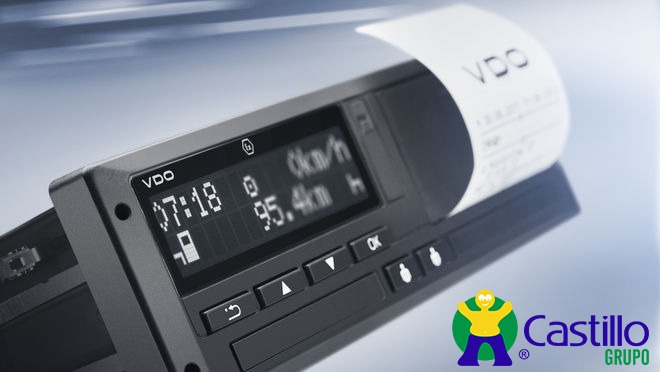A tachograph is a control device installed in land transport vehicles, designed to automatically or semi-automatically record essential parameters of the vehicle and driver’s activity.
Its main purpose is to ensure road safety and compliance with legal regulations, acting as a “black box” that provides accurate and unalterable data for each journey. Since January 1, 2006, its use has been mandatory in Spain for goods vehicles with a maximum authorised mass exceeding 3,500 kilograms and for passenger vehicles with more than 9 seats, including the driver.
Over the years, tachographs have evolved significantly, with three main types currently existing.
The analogue tachograph, the oldest type, uses a paper disc to record speed and times, although its use is being progressively phased out.
The digital tachograph, the current standard since 2006, stores information in an electronic memory and uses a personal driver card, allowing for more detailed recording and greater ease of data analysis.
Finally, the smart tachograph, mandatory in new vehicles registered after June 2019, incorporates connectivity and advanced functions for more efficient supervision.
These devices are of vital importance because they record a large amount of crucial information. Among the data they collect are vehicle speed, distance travelled, driving times, rest periods and breaks, as well as arrival and departure times.
This monitoring is essential to prevent driver fatigue, one of the main risk factors in traffic accidents, thus directly contributing to greater road safety.
The control and evaluation of compliance with tachograph regulations is a shared task. During the Technical Vehicle Inspection (ITV), it is verified that the device has not been tampered with and is in perfect condition.
On the road, land transport inspection officers are authorised to carry out checks, where they can request drivers to present their driver card, printed records, and recording sheets for the last 56 days to verify compliance with the driving and rest times established by law.
In conclusion, the tachograph stands as an indispensable pillar in the transport sector. Beyond being a simple recording instrument, it is a key tool for promoting fair working conditions for drivers, ensuring fair competition between companies, and, above all, safeguarding the lives of all road users by preventing accidents.
Its correct use and maintenance is, therefore, an obligation and a shared responsibility of drivers, companies, and authorities.
Have any thoughts?
Share your reaction or leave a quick response — we’d love to hear what you think!





